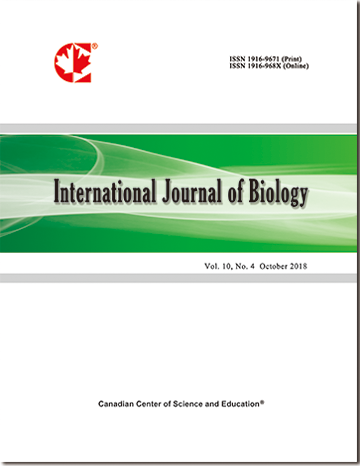Impact of Malaysian Continental Drift on the Genetic Diversity of Horseshoe Crab Inferred through mtDNA Sequence Analysis
- M. Rozihan
- E. Ismail
Abstract
An attempt was made to examine the influence of Malaysian continental drift on the genetic and haplotype diversity of Malaysian horseshoe crab (Tachypleus gigas [Muller, 1785]) distributed along the east coast of Peninsular Malaysia and distant Borneo Island. Mitochondrial DNA (AT rich region = 369bp) analysis showed that T. gigas has higher haplotype diversity in peninsular Malaysia compared to east Malaysian (Sarawak) samples. Highest haplotype diversity (h±SD) was observed among the Terengganu samples (0.813 ± 0.071) followed by Pahang samples (0.813 ± 0.065). There were no difference in nucleotide diversity (Pi) noted in east cost of Peninsular Malaysian (PM) samples. Overall haplotype (h±SD) and nucleotide (Pi±SD) diversity of T. gigas in PM samples including Sarawak was 0.827 ± 0.051 and 0.0078 ± 0.0014 respectively. A total of 6 unique haplotypes were recorded of which 2, 2 and 1 were unique to Terengganu, Sarawak and Pahang samples respectively. Pair wise haplotype frequency (FST) value was not statistically significant (P > 0.05) for all the groups indicating the limited gene flow among the population. In addition phylogenetic scrutiny visibly clustered T. gigas samples from T. tridentatus samples representing sound phylogenetic signals in mtDNA AT rich region. The findings from this study have important implications for proper management and conservation of horseshoe crab in Malaysia.
- Full Text:
 PDF
PDF
- DOI:10.5539/ijb.v4n1p104
Index
- ACNP
- AGRICOLA
- BASE (Bielefeld Academic Search Engine)
- CAB Abstracts
- CiteFactor
- CNKI Scholar
- CrossRef
- DTU Library
- Elektronische Zeitschriftenbibliothek (EZB)
- Excellence in Research for Australia (ERA)
- Google Scholar
- Infotrieve
- LIVIVO (ZB MED)
- LOCKSS
- Max Planck Institutes
- MIAR
- PKP Open Archives Harvester
- Qualis/CAPES
- ResearchGate
- ROAD
- SafetyLit
- SHERPA/RoMEO
- Technische Informationsbibliothek (TIB)
- Universe Digital Library
- WorldCat
Contact
- Ryan JonesEditorial Assistant
- ijb@ccsenet.org
